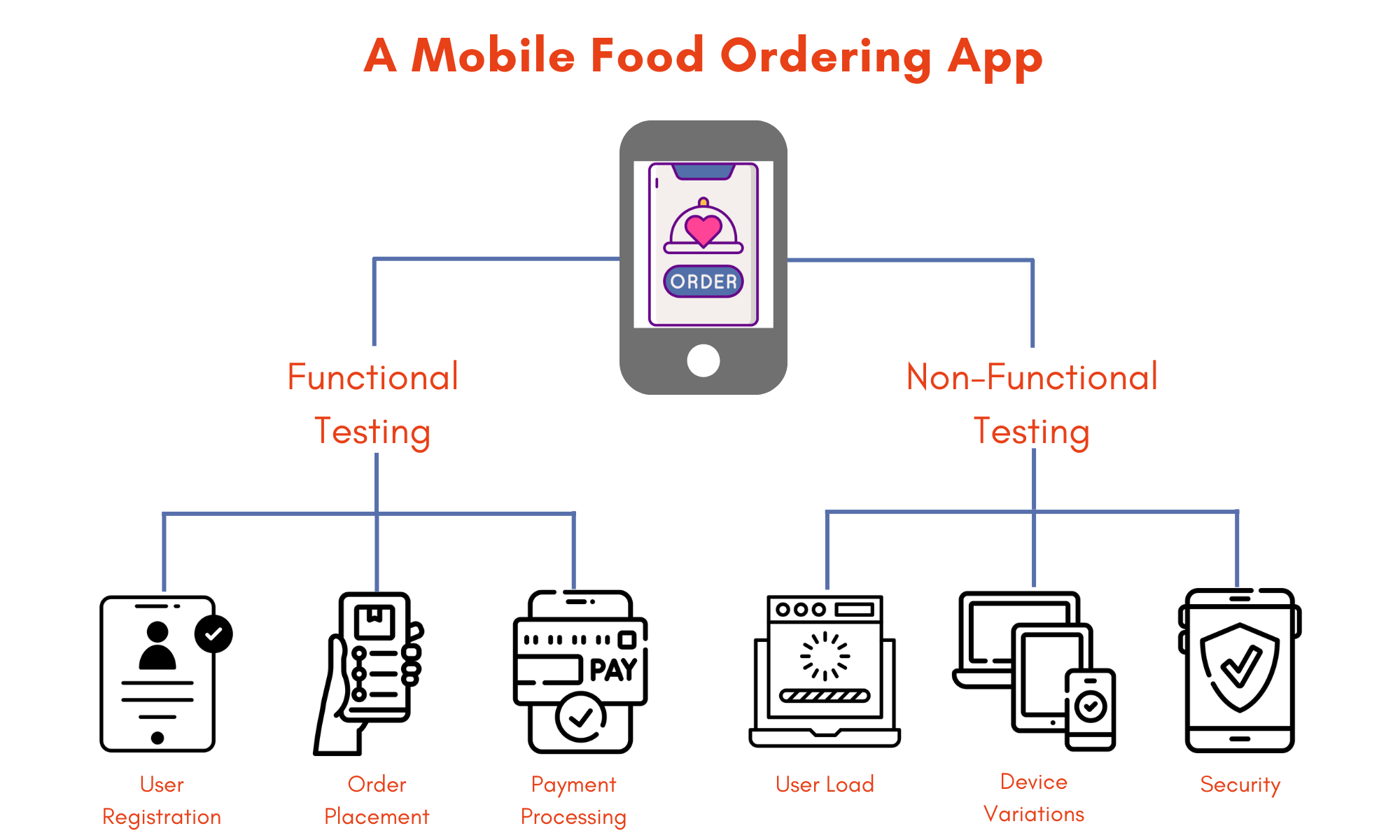Have you ever wondered how software gets thoroughly checked before it reaches your hands? There are actually two main types of testing that software goes through: functional testing and non-functional testing. Both play vital roles in ensuring a smooth and reliable software experience, but they focus on different aspects.
This article will cut through the confusion and explain the key differences between functional and non-functional testing in a clear and easy-to-understand way. So, by the end, you'll be able to tell the difference between testing how a feature works and testing how well it performs!
>> Read more about software testing:
- 4 Levels Of Testing In Software Testing
- Detailed Explanation of 7 Software Testing Principles
- Exploring The Importance Of Software Testing
- How to Write A Powerful Test Plan in Software Testing?
- Difference between Verification and Validation in Software Testing

What is the Difference Between Functional and Non-Functional Testing?
Suppose that you're building a brand new car. Functional testing would be like checking if the engine starts, the steering wheel turns the wheels, and the brakes bring the car to a stop. It's all about ensuring the car performs its basic functions as intended.
Non-functional testing, on the other hand, would be like taking the car for a spin and evaluating how well it performs those functions. Does the engine roar to life smoothly, or does it sputter and cough? Does the steering respond quickly and precisely, or is there a lag between your turn and the car's movement? These aspects delve into the car's overall experience, not just its basic functionalities.
Focus vs. Functionality
Here's where the core difference lies:
- Functional Testing: Focuses on what the software does. It verifies if features work according to their specifications and requirements. Think of it as checking off a list of functionalities, ensuring each one performs as designed.
- Non-Functional Testing: Evaluates how the software performs. It goes beyond the basic "does it work?" question and delves into characteristics like speed, stability, security, usability, and scalability. Here, the tester is like a seasoned driver evaluating the car's handling, comfort, and overall performance.
Techniques
Functional and non-functional testing also use different approaches:
- Functional Testing: Often employs testing techniques like black-box testing, where the tester interacts with the software without knowing its internal workings, or white-box testing, where the tester has access to the software's code. Regression testing ensures that new features don't break existing functionalities.
- Non-Functional Testing: This might involve performance testing to measure website loading times under various loads, usability testing to observe how real users interact with the interface, and security testing to identify and plug vulnerabilities.
Benefits and Goals
Ultimately, both functional and non-functional testing contribute to a successful software product.
- Functional testing ensures the software functions as intended, delivering the promised features and functionalities.
- Non-functional testing helps create a positive user experience by making sure the software performs well, is secure, and is easy to use.
By combining these two testing types, developers and testers can create high-quality software that not only works but also works wonderfully.
Here is a table summarizing the key points of comparison for easier reference:
|
Criteria |
Functional Testing |
Non-Functional Testing |
|
Focus |
What the software does. |
How the software performs. |
|
Objective |
Verifies features work according to specifications. |
Evaluates software characteristics beyond core functionalities. |
|
Examples |
|
|
|
Techniques |
|
|
|
Goals |
Ensures software functions as intended. |
Creates a positive user experience. |
|
Benefits |
Delivers promised features and functionalities. |
Improves performance, usability, and security. |
Practical Example: Comparing Functional vs. Non-Functional Testing in a Mobile App
Let's analyze the development of a mobile food ordering app to illustrate the distinct roles of functional and non-functional testing.
Functional Testing
- Criteria: Verifying core functionalities as per specifications.
- Example:
- Users can successfully register and login.
- Browse through restaurant menus and add desired items to the cart.
- Apply discounts and coupons accurately.
- Securely process payment information and confirm orders.
Non-Functional Testing
- Criteria: Evaluating software characteristics beyond core functions.
- Example:
|
Performance |
|
|
Usability |
|
|
Security |
|
Comparison Analysis
This example highlights the clear distinction between functional and non-functional testing. Functional testing ensures the core functionalities like user registration, order placement, and payment processing work as intended.
On the other hand, non-functional testing digs deeper. It evaluates the app's performance under real-world conditions, considering factors like user load and device variations. It assesses the user interface's usability, ensuring a smooth and intuitive ordering experience for everyone. Finally, security testing safeguards sensitive user data and ensures the overall safety of the app.

When to Use Each Type: Functional vs. Non-Functional Testing
Here's a breakdown of when to use each type of testing:
- Functional Testing First: Functional testing is usually done early in development to make sure the core features work as planned. Think of it as catching any big mistakes before you invest more time and effort.
- Non-Functional Testing Throughout: Non-functional testing can happen at different stages. You can check the website's loading speed as features are added, or test the app's usability with real people to see if it's easy to use.
- Working Together: Functional and non-functional testing work best together. By combining them, you can create software that works properly and is also enjoyable to use!
>> Read more:
- What is Unit Testing? Definition, Benefits & Process
- AI in Software Testing: How It Works, Benefits & Challenges
- Top 10 Best End-to-End Testing Tools and Frameworks
- Top 6 Automation Testing Tools for Businesses
- Manual Testing vs Automation Testing: Which is Better?
Conclusion
In the world of software development, both functional and non-functional testing play vital roles. Functional testing ensures the software fulfills its intended purpose by verifying core features work correctly. Non-functional testing delves deeper, evaluating how well the software performs in terms of speed, usability, security, and other user-centric aspects.
By working together, functional and non-functional testing create robust, high-quality software that not only functions as intended but also provides a positive user experience. This strong alliance ensures the software is built to last and delivers a truly satisfying experience for its users.
>>> Follow and Contact Relia Software for more information!
- testing
- Mobile App Development
- Web application Development

